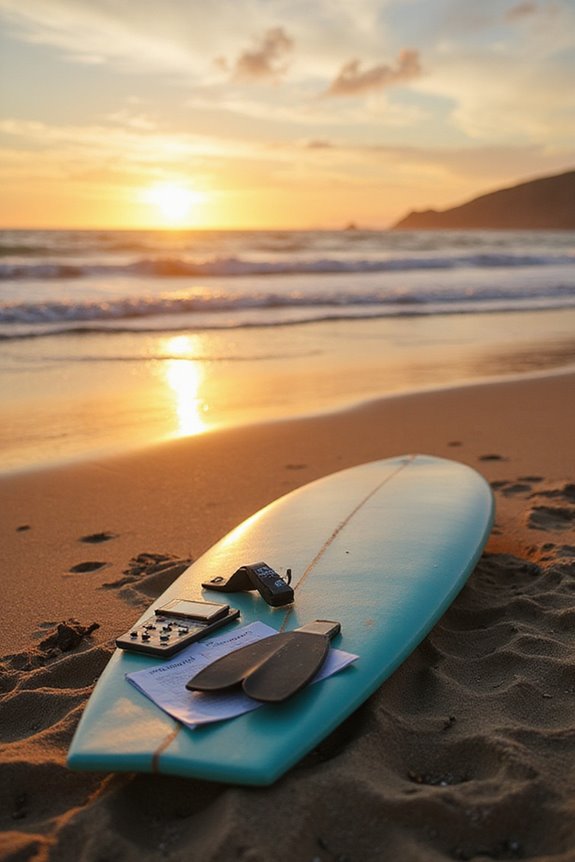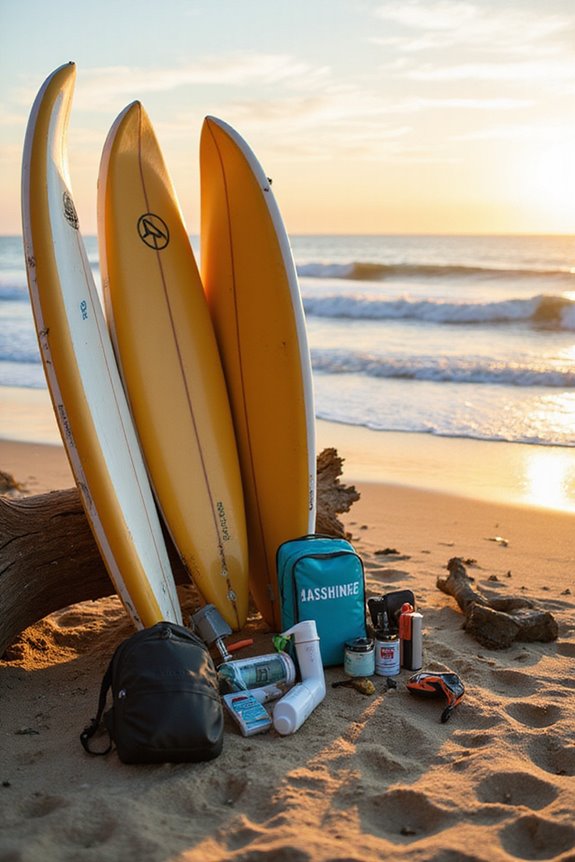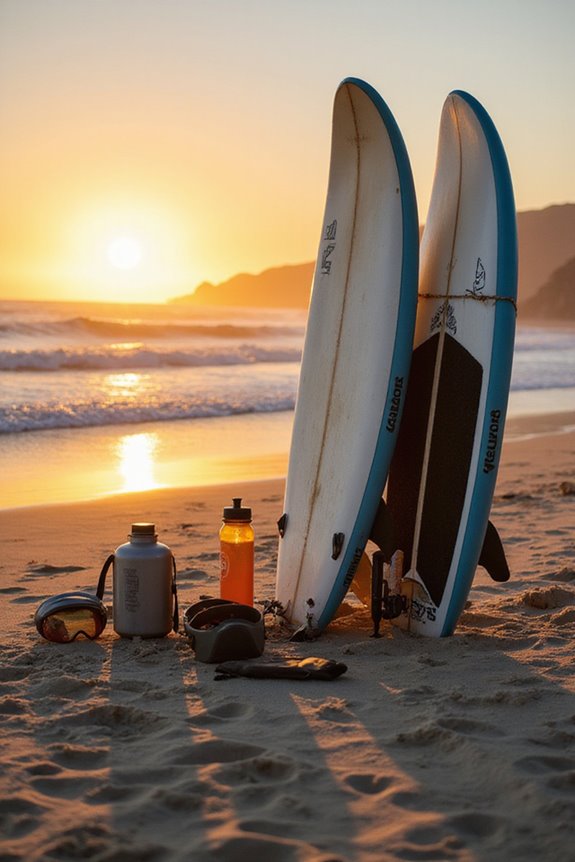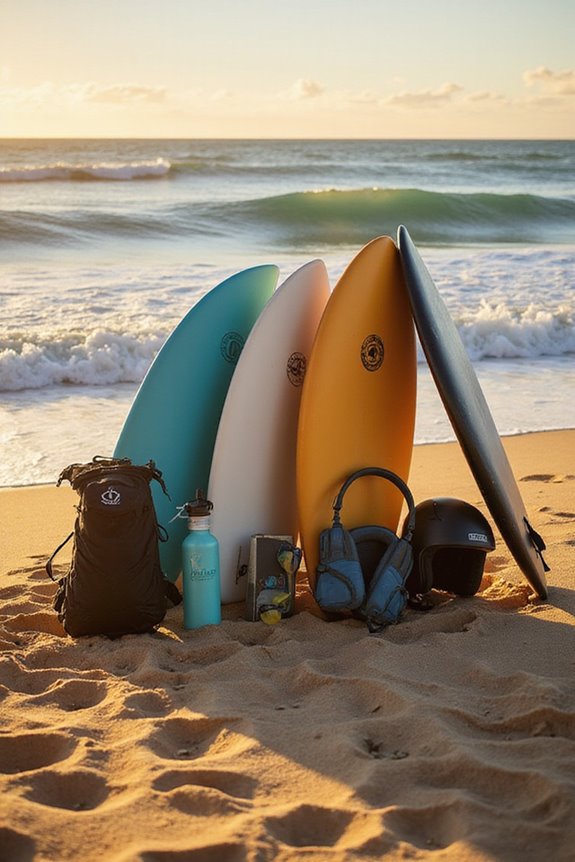Surfing alone comes with significant dangers that we should all be aware of. It increases the risk of drowning, especially since we don’t have companions to provide immediate assistance. Additionally, we face higher chances of injuries from board contact and environmental hazards, like harmful algal blooms. Health conditions can also become critical without support. Finally, it’s crucial to know local ocean conditions, self-rescue techniques, and basic first aid for our safety. Learn more about ways to stay safe while surfing alone.
Key Takeaways
- Surfing alone increases drowning risks, as there are no companions to assist in emergencies or provide immediate help.
- Lack of immediate assistance can exacerbate medical issues, especially for older surfers with cardiovascular vulnerabilities.
- Surfing without a buddy reduces opportunities for quick response to injuries from board contact or environmental hazards.
- Environmental conditions like rip currents can quickly overwhelm solo surfers, leading to dangerous situations.
- Absence of communication with others diminishes safety protocols, making it harder to signal for help when needed.
Drowning Risks and Fatalities
While we enjoy the thrill of surfing, it’s essential to recognize the significant risks associated with this activity, particularly when we choose to surf alone. Statistics reveal that drowning accounts for over half of surfing-related fatalities. Male surfers, especially those aged 55 and older, face higher drowning risks, often due to physical limitations.
Key factors contributing to drowning include:
- Lack of swimming ability, with 20% of surfers identifying as weak swimmers.
- Environmental hazards, like rip currents, which can quickly overwhelm individuals.
- Solo surfing eliminates the immediate safety net provided by companions.
To enhance drowning prevention, we must prioritize safety awareness, understand local surf hazards, and always surf with a buddy whenever possible. Additionally, utilizing safety features in surfing accessories can help improve overall safety while in the water.
Medical and Pre-existing Conditions
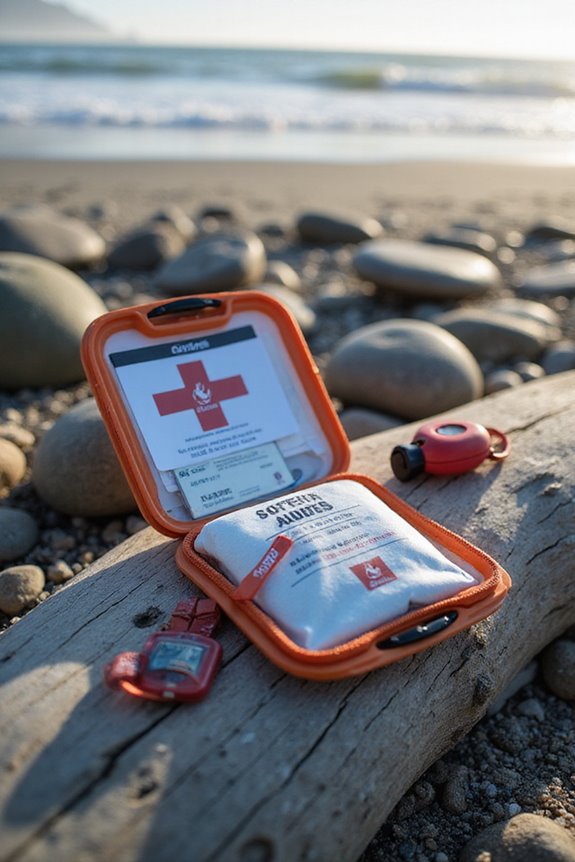
Surfing alone introduces various risks that can be exacerbated by medical and pre-existing conditions. Older surfers, especially those over 55, face significant cardiovascular vulnerabilities, increasing the risk of cardiac events. Intense physical exertion while surfing can trigger acute episodes, particularly for those with underlying heart conditions.
Moreover, surfers may experience respiratory issues, which can worsen without immediate assistance. Conditions like asthma or allergies can limit breathing capacity, making solo surfing more dangerous.
We must prioritize awareness and management of these health concerns. Regular screenings for cardiovascular health, along with proper respiratory management plans, can help mitigate risks. Ultimately, understanding our medical backgrounds is essential for safe surfing experiences, especially when venturing out alone. Additionally, choosing the right wetsuit thickness for the water temperature can provide extra warmth and comfort, which is crucial for those with health vulnerabilities.
Injury Risks and Types

Injury risks associated with surfing alone can be significant, especially when we’re unaware of the different types of injuries that may occur. The most common injuries include lacerations (42%), contusions (13%), and sprains/strains (12%). Importantly, head and neck injuries account for 14-37% of acute cases, often due to contact with our surfboards.
To enhance injury prevention, we should be aware of our surroundings and practice emergency preparedness. Most injuries arise from board contact (55%), with common locations being the lower extremities (37%) and head/neck (14-37%). Understanding these risks can help us stay safer while enjoying surfing, especially when riding larger waves or in crowded areas. Additionally, using proper ear protection while surfing can help prevent injuries related to water exposure and maintain overall ear health.
Environmental Hazards
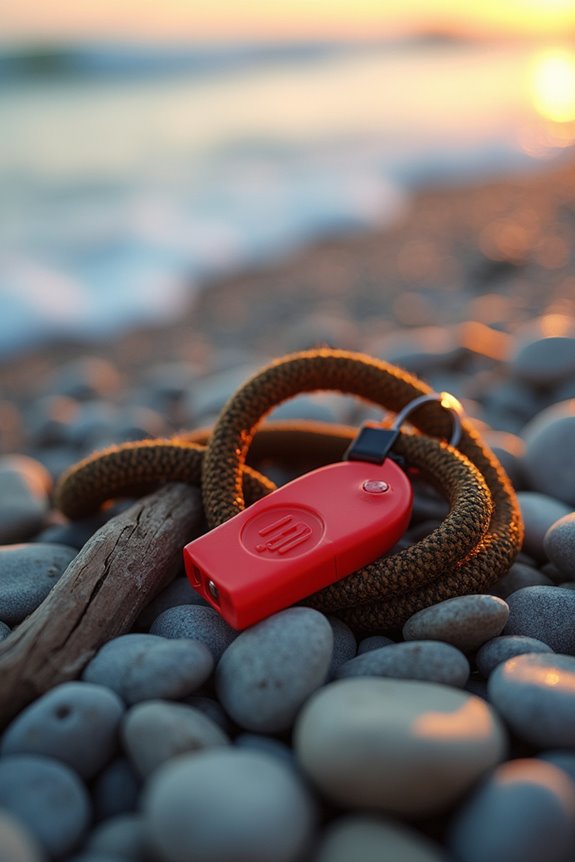
As we venture into the ocean, we must be aware of the various environmental hazards that can threaten our safety and health. Pollution exposure is a significant concern; urban runoff can introduce harmful bacteria and viruses into the water, increasing our risk of infections and illnesses. Additionally, harmful algal blooms can release toxins that may affect us through skin contact or inhalation.
Ecosystem degradation further complicates our surfing experience. Unsustainable coastal development destroys marine habitats, leading to increased pollution and dangerous encounters with marine life. With only a small percentage of surf ecosystems protected by conservation efforts, we face long-term risks both to our health and the environment. Staying informed about local conditions is essential for our safety while surfing.
Psychological and Situational Factors
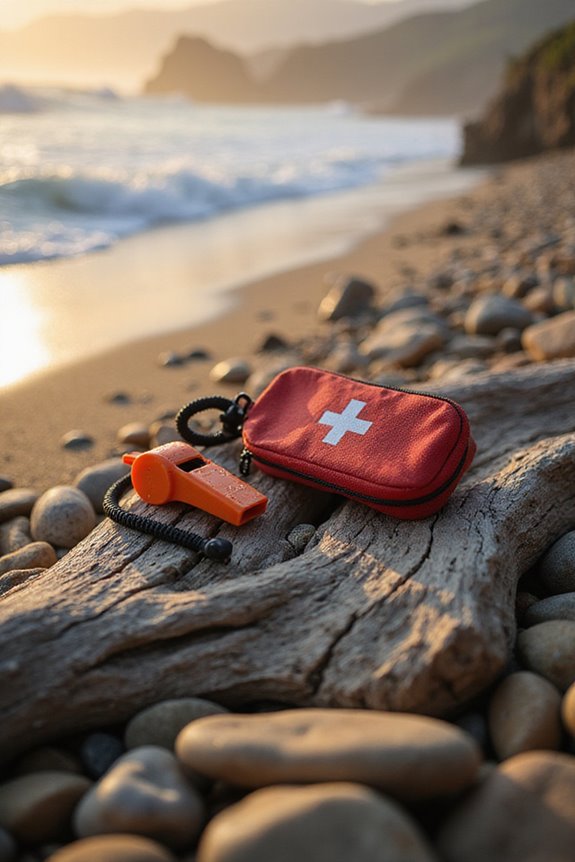
While enjoying the ocean’s waves can be exhilarating, it’s important to recognize the psychological and situational factors that come into play when we decide to surf alone. Surfing solo can heighten stress and anxiety due to the absence of social support. Without reassurance from peers, fear of injury or drowning can intensify, leading to panic.
Additionally, decision-making may suffer; without external feedback, we might misjudge wave conditions or our own fatigue. Emotional isolation can reduce motivation and increase vulnerability, making challenges feel more intimidating. Developing strong mental resilience is essential, as it helps us manage fear and stress independently. Setting realistic goals and boundaries can also support our psychological well-being while surfing alone. Furthermore, surfing lessons from experienced instructors can provide valuable insights into Maui’s unique surf conditions, helping to build confidence and safety awareness even in solo sessions.
Risk Assessment for Solo Surfers
When evaluating the risks of surfing alone, we must consider various environmental and physical hazards that can considerably impact our safety. These include increased chances of shark encounters, serious injuries from collisions with reefs or surfboards, and heightened drowning risks due to lack of immediate assistance.
Effective risk management is essential. We should adopt safety strategies like surfing in familiar areas, checking conditions before heading out, and informing someone about our plans. Moreover, older surfers face nearly double the injury rate, and prolonged exposure to hazards, such as strong currents, can elevate risks. By analyzing these dangers and implementing safety measures, we can mitigate the risks associated with solo surfing and enjoy safer sessions in the water. Additionally, it’s wise to consider coverage for surfing activities to protect against potential injuries while enjoying the sport.
Importance of Safety Practices
To guarantee our safety while surfing alone, we must prioritize effective safety practices that encompass equipment use, environmental awareness, and emergency preparedness.
Safety Gear
Using appropriate safety gear is essential. Wearing a leash keeps our board close, while wetsuits provide thermal protection. Helmets can prevent head injuries, especially in rocky areas. Regularly inspecting our boards makes certain they’re safe to use.
Environmental Awareness
We must understand local ocean conditions, including tides and currents, to avoid hazards. Staying informed about weather changes can prevent dangerous situations.
Emergency Response
Knowing self-rescue techniques and having basic first aid skills can save lives. Carrying a waterproof whistle helps signal for assistance if needed. Finally, it’s wise to check in with someone before heading out to enhance our emergency response plan.
Frequently Asked Questions
What Should I Bring When Surfing Alone for Safety?
When we surf alone, we should pack a reliable surfboard leash, an emergency whistle for signaling, thermal layers for warmth, and safety gear to guarantee our adventure stays enjoyable and secure in the waves.
How Can I Improve My Swimming Skills for Surfing?
To improve our swimming skills for surfing, we should focus on swimming techniques, enhance ocean awareness, practice breath control, and build endurance, ensuring we’re prepared for any conditions we encounter while riding the waves.
Are There Specific Surf Spots Safer for Solo Surfers?
Sure, we could all use a magic wand for safer surf spots, but finding spots with mellow waves and solid communities is key. Let’s embrace solo surfer tips and seek locations that prioritize our safety!
How Can I Recognize Warning Signs of Fatigue While Surfing?
When we’re out surfing, recognizing exhaustion is essential. We should watch for surf fatigue signs like muscle tiredness, poor decision-making, and slower reactions. Staying aware helps us enjoy our sessions safely and effectively.
What First Aid Supplies Should I Carry While Surfing Alone?
When we’re surfing, it’s crucial we carry first aid supplies like adhesive dressings, saline solution, and antibiotic ointments. These essential supplies can help us handle injuries effectively, ensuring a safer experience out on the water.




